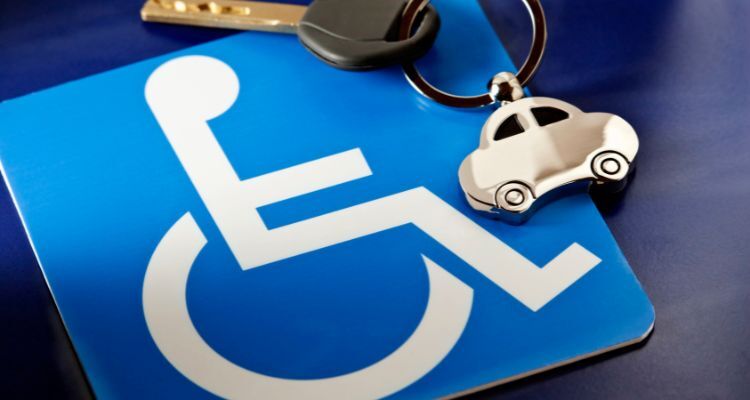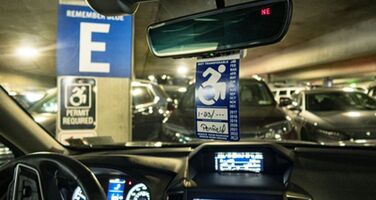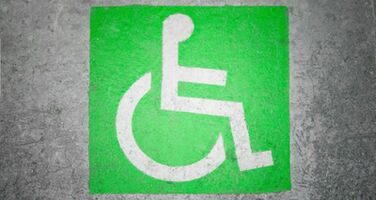
Tips for Displaying Your Handicap Placard Correctly in Oklahoma
When it comes to parking privileges, having a disability tag is crucial for ensuring convenient access to facilities and services. However, displaying your disability tag correctly is just as important to prevent misuse, avoid penalties, and ensure that you're complying with local regulations. This guide focuses on tips and best practices for displaying your handicap placard correctly in Oklahoma, as well as highlighting relevant legal considerations. By following these guidelines, you’ll ensure that you’re using your disability tag properly and contributing to a fair and accessible parking system for everyone.
Understanding Handicap Placards in Oklahoma
What Are Disability Tags?
Disability tags, often referred to as disability placards or permits, are special markers issued to individuals with certain disabilities. In OK, these tags allow the holder to park in designated spaces closer to building entrances and, in some cases, provide exceptions for parking duration limits. It's essential to know that these tags are issued based on state-specific regulations and are not automatically granted.
OK's disability tags are intended to ensure that individuals with mobility impairments or other qualifying conditions have the same access to facilities as those without such impairments. A significant part of this access involves properly displaying these tags, which we’ll delve into more below.
Types of Disability Tags Available
OK offers a few different types of handicap permits to accommodate various needs:
- Permanent Tags: These are issued to individuals with long-term or permanent disabilities. They are typically valid for five years and can be renewed.
- Temporary Tags: Designed for individuals with temporary disabilities, such as a broken leg or recovery from surgery. These are usually valid for six months or the duration specified by a physician.
- License Plates: OK also offers disabled license plates for vehicles owned by individuals with disabilities. These plates carry the same privileges as disability tags but are more permanent and less prone to theft or misplacement.
- Disabled Veteran Tags: For veterans who have been medically certified as 100% disabled due to service-related conditions.
Eligibility Criteria for Disability Tags
To be eligible for a disability tag in OK, an individual must meet specific medical criteria. Common qualifying conditions include:
- Inability to walk 200 feet without stopping to rest.
- Need for portable oxygen.
- Limited mobility due to arthritis, neurological, or orthopedic conditions.
- Cardiac conditions classified as Class III or IV by the American Heart Association.
- Visual impairments.
The eligibility must be verified by a licensed physician, physician’s assistant, or advanced practice nurse.
Application Process for Handicap Placards
Required Documentation
When applying for an Oklahoma disabled permit, you’ll need to provide:
- Application Form: The Oklahoma Disability Parking Placard Application (Form 752-A) must be filled out. This form can be downloaded online or picked up from the Oklahoma Department of Public Safety (DPS).
- Medical Certification: A section of the application must be completed by a qualified healthcare provider to certify your disability.
- Identification: A copy of your valid OK driver's license or state ID.
- Proof of Residency: Recent utility bills, a rental agreement, or another document proving residency in OK may be required.
Step-by-Step Application Process
- Complete the Application Form: Fill out your personal details and have the medical certification section completed by your healthcare provider.
- Gather Supporting Documents: Ensure you have all necessary identification and proof of residency.
- Submit the Application: You can mail the completed form and documents to the OK DPS or submit them in person at a local tag agency.
- Wait for Approval: Processing times may vary, but you should receive your disability tag within a few weeks.
Temporary vs. Permanent Disability Tags
Understanding the difference between temporary and permanent tags is essential:
- Temporary Tags: Red in color and valid for up to six months. Must be renewed or returned after the temporary condition has improved.
- Permanent Tags: Blue in color and valid for five years. Can be renewed without a new physician’s certification if the condition is lifelong.
Make sure you apply for the correct type based on your needs.
The Importance of Displaying Your Disabled Permit Properly
Displaying your disability tag correctly is more than just a legal requirement—it’s a courtesy to others who may need those accessible parking spaces. If a tag is not properly displayed, law enforcement may not be able to identify the vehicle as authorized to use the space, which can result in fines and penalties. Moreover, improper display can lead to misuse, contributing to the lack of available accessible parking for those who truly need it.
Why Proper Display Matters
- Ensures access for qualified individuals.
- Prevents penalties and legal consequences.
- Minimizes misuse and fraud.
- Helps authorities easily verify the permit.
How to Properly Display Your Disabled Permit
Inside Your Vehicle: Windshield Placement
To ensure that your disability tag is visible and legally compliant, follow these steps:
- Hanging the Tag: Place the tag on the rearview mirror while parked in a handicapped space. Ensure it’s facing outward so that enforcement officers can easily read it.
- Removing the Tag While Driving: For safety reasons, remove the tag when driving. Leaving it hanging can obstruct your view and is a traffic violation.
Outside Your Vehicle: License Plate Options
If you opt for a disability license plate instead of a disability tag, ensure that it is:
- Securely Attached: The license plate must be properly affixed to the front and/or rear of your vehicle as required by the state's law.
- Clearly Visible: Ensure that the plate is not obstructed by dirt, snow, or any vehicle accessories.
Dos and Don’ts of Displaying the Tag
- Do’s:
- Use the disability tag or plate only when the disabled individual is in the vehicle.
- Park in designated spaces only and not in loading zones or restricted areas.
- Renew your special pass or plate on time to avoid expiration.
- Report a lost or stolen tag immediately to prevent misuse.
- Don’ts:
- Do not lend your disability tag to anyone else.
- Avoid using the tag if the disabled individual is not present.
- Don’t park in no-parking zones even with a disability tag.
- Do not cover any part of the tag when hanging it on the mirror.
Common Mistakes to Avoid
Leaving the Tag Visible While Driving
One of the most common errors is leaving the disability tag hanging while driving. This not only risks a traffic citation but can also obscure your vision, leading to dangerous driving conditions.
Misplacing the Tag Inside the Vehicle
Misplacing your tag can be easy, especially if you frequently move it between vehicles. Always store it in a designated spot when not in use to avoid losing it or damaging it.
Using the Tag When the Person with Disability Is Not Present
It’s illegal and unethical to use a disability tag when the person it was issued to is not present in the vehicle. This misuse can lead to fines and the revocation of your tag.
Legal Consequences of Incorrect Display
Fines and Penalties
Improper use or display of a disability tag in OK can result in fines. These can range from $100 to $500, depending on the severity of the violation. Repeated offenses may result in higher fines and additional legal action.
Revocation of Tag
Serious or repeated violations, such as lending your tag to others or using it fraudulently, can lead to the revocation of your disability tag. This revocation can be temporary or permanent, depending on the circumstances.
Impact on Your Driving Record
While using a disability tag improperly doesn’t directly affect your driving record, related traffic violations, such as obstructed view citations, can add points to your record, potentially leading to increased insurance rates and other penalties.
Maintaining Your Handicap Placard
Renewing Your Disability Tag
For permanent disability tags, renewal is required every five years. While temporary tags can be renewed if the medical condition persists. The renewal process is straightforward:
- Receive a Renewal Notice: The OK DPS typically sends a renewal notice before your tag expires.
- Submit a Renewal Application: You may need to complete a renewal application and submit it to the DPS.
- Medical Recertification: Depending on your condition, you might need another medical certification to confirm your eligibility.
Replacing Lost or Stolen Tags
If your disability tag is lost or stolen, you must report it to the OK DPS and apply for a replacement:
- File a Police Report: In the case of theft, a police report can help prevent misuse.
- Submit a Replacement Application: Complete the necessary forms and submit them to the DPS along with any required fees.
Caring for Your Tag to Ensure Longevity
To keep your disability tag in good condition:
- Avoid Exposure to Extreme Temperatures: Prolonged exposure to the sun or extreme cold can cause the tag to fade or become brittle.
- Handle with Care: Avoid bending or scratching the tag, as this can make it harder to read.
Parking Privileges and Restrictions
Where You Can Park with a Disability Tag
With a disability tag, you can park in:
- Designated Handicapped Spaces: These are often located near the entrance of buildings.
- Metered Parking: In many areas, individuals with a disability tag can park for free at metered spaces.
- Loading Zones: Some cities allow short-term parking in loading zones for vehicles with disability tags.
Time Limits and Space Restrictions
While disability tags grant access to certain parking privileges, they don’t exempt you from all parking rules:
- Observe Time Limits: Some spaces may still have time restrictions, especially in high-traffic areas.
- Avoid Blocking Access: Never park in a way that obstructs sidewalks, driveways, or fire hydrants.
Parking in Private vs. Public Spaces
Your disability tag is valid in both public and private parking spaces. However, private property owners may set specific rules, so always check for posted signs and regulations.
Traveling with Your Handicap Placard
Using Your Oklahoma Tag in Other States
OK disability tags are recognized in all 50 states under the Americans with Disabilities Act (ADA). When traveling out of state:
- Check Local Regulations: Each state may have specific rules for disabled parking, so familiarize yourself with them.
- Bring Your Tag: Always carry your tag or ensure your disability license plate is properly affixed.
International Travel Considerations
When traveling internationally, your OK disability tag may not be recognized. In such cases:
- Contact Local Authorities: Reach out to local transportation departments or embassies to inquire about temporary disability parking permits.
- Consider Renting a Vehicle with a Disability Tag: In some countries, rental agencies offer vehicles equipped with local disability tags.
Navigating Airports and Public Transport
Most airports and public transport hubs in the U.S. have designated parking for vehicles with disability tags. When using these facilities:
- Plan Ahead: Arrive early to secure a spot, especially during peak travel times.
- Use Accessible Shuttles: Many airports offer free or low-cost shuttles from parking areas to terminals for individuals with disabilities.
Dealing with Disabled Permit Abuse
Identifying and Reporting Abuse
Disability tag abuse, such as using a tag without the person it was issued to or using a fake tag, is a serious issue. If you suspect abuse:
- Observe and Record: Take note of the vehicle’s make, model, license plate, and the time of the incident.
- Report to Authorities: Contact local law enforcement or the OK DPS to report the abuse.
Consequences for Abusers
Those caught misusing a disability tag can face:
- Fines and Penalties: Significant fines and, in some cases, community service.
- Legal Action: Persistent abuse can lead to criminal charges, especially if fraud is involved.
Protecting Your Tag from Theft
To prevent your disability tag from being stolen:
- Use a Locking Device: Some companies sell devices that secure the tag to your rearview mirror.
- Remove the Tag When Not in Use: Always take the tag with you when you’re not using it to park in a designated space.
Technological Advancements and Future Changes
Digital Disability Tags
The future of handicap placards may include digital versions that can be displayed on a vehicle’s dashboard or windshield electronically. These tags could:
- Provide Enhanced Security: Digital tags would be harder to steal or forge.
- Offer Real-Time Updates: Tags could update in real time, showing valid usage periods or medical recertification dates.
Integration with Smart Vehicles
As vehicles become more technologically advanced, disability tags may integrate with smart systems, allowing:
- Automatic Identification: Vehicles could automatically notify parking enforcement of a valid disability tag without the need for visual inspection.
- Navigation Assistance: Smart vehicles could guide drivers to available accessible spaces.
Anticipated Changes in Legislation
As technology evolves, so too might the laws governing disability tags:
- Stricter Enforcement: With digital tags, enforcement could become more stringent, with automatic fines for misuse.
- Expanded Access: Legislators may increase the availability of accessible spaces in high-demand areas.
FAQs
What Should I Do If My Disability Tag Is Damaged?
If your disability tag is damaged, you should apply for a replacement immediately. Submit the damaged tag along with a replacement application to the OK DPS. There may be a small fee for the replacement.
Can I Use My Disability Tag in a Rental Car?
Yes, you can use your disability tag in a rental car. Just ensure that the tag is displayed properly according to OK’s guidelines. If traveling out of state, confirm that the rental car company allows the use of personal disability tags.
What If I Forget to Display My Disability Tag?
If you forget to display your disability tag and receive a parking ticket, you may be able to contest the ticket by providing proof that you possess a valid tag. However, this is not guaranteed, and it’s best to always ensure the tag is displayed correctly.
How Can I Get a Replacement Disability Tag in OK?
To replace a lost or stolen disability tag, complete the relevant sections of Form 752-A and submit it to the OK DPS. Include any necessary fees and documentation, such as a police report in the case of theft.
Are There Fees for Replacing a Lost Disability Tag?
Yes, there is usually a small fee for replacing a lost or stolen disability tag. The exact amount can vary, so check with the OK DPS for the current fee structure.
What Are the Specifics for Displaying Disability Tags in Snowy Conditions?
In snowy conditions, ensure that your disability tag remains visible and unobstructed. Brush off any snow from your vehicle and the tag itself before parking in a accessible space. If your vehicle has a disability license plate, make sure it’s free of snow as well.
Conclusion
Displaying your handicap placard correctly in Oklahoma is crucial for maintaining your parking privileges and ensuring compliance with state laws. By following the guidelines outlined in this article, you can avoid common mistakes, prevent legal issues, and help protect the integrity of the disability tag system. Remember, these tags are more than just a convenience—they are a lifeline for individuals with disabilities, providing them with the access they need to live independently.
Ensuring that your disability tag is displayed correctly also helps maintain the integrity of the system, ensuring that those who truly need accessible parking spaces can use them. As we look to the future, technological advancements and potential legislative changes may further enhance how we use and protect disability tags.
.png)






